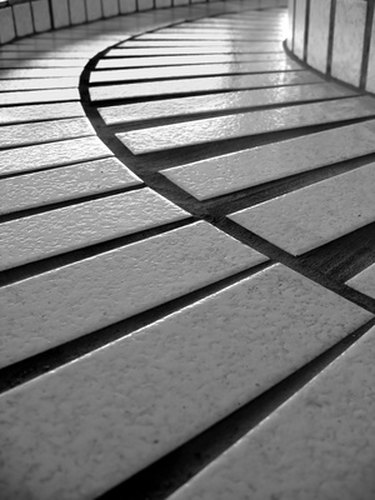
Waterproofing is used in a variety of areas, mostly as an underlayment layer between the substrate surface and a ceramic tile installation. It can be a painted-on type of waterproofing or a membrane that is rolled out and stuck with a tar-based adhesive, and in all cases it can be removed during a remodeling project, although the exact process will vary depending on the type of waterproofing found. While removing waterproofing is a relatively simple task, it has varying degrees of messiness, and homeowners should be prepared with old clothing and work gloves that they do not mind getting dirty.
Step 1
Determine the type of waterproofing you are dealing with. The only way to expose the waterproofing is to remove the layer of ceramic tile, natural stone, wood or other type of finished material that was installed on top of the waterproofing. Once you know what kind of waterproofing you are dealing with you will know what type of tools are required to remove the waterproofing and expose the substrate.
Video of the Day
Step 2
Peel back the paint-on waterproofing. For the most part, paint-on waterproofing is rolled on with a paint roller or painted on with a paint brush, and creates a layer between the substrate and whatever finish material is used. The surface can be scratched with a knife and the surrounding areas peeled away with a floor or hand scraper, similar to the skin of an orange being peeled away from the core of the fruit.
Step 3
Cut and pull off membrane waterproofing systems. Understand that membrane-based waterproofing systems rely upon tar-based adhesives to keep the waterproofing in place, and are mostly used in commercial applications where a lifelong installation is preferred. They are extremely hard to pull up, and the use of a blowtorch with a respirator is required in almost all cases due to the fact the adhesive needs to be warmed up so you can effectively peel away the layers of membrane and then scrape the adhesive with a floor scraper or hand scraper.
Video of the Day